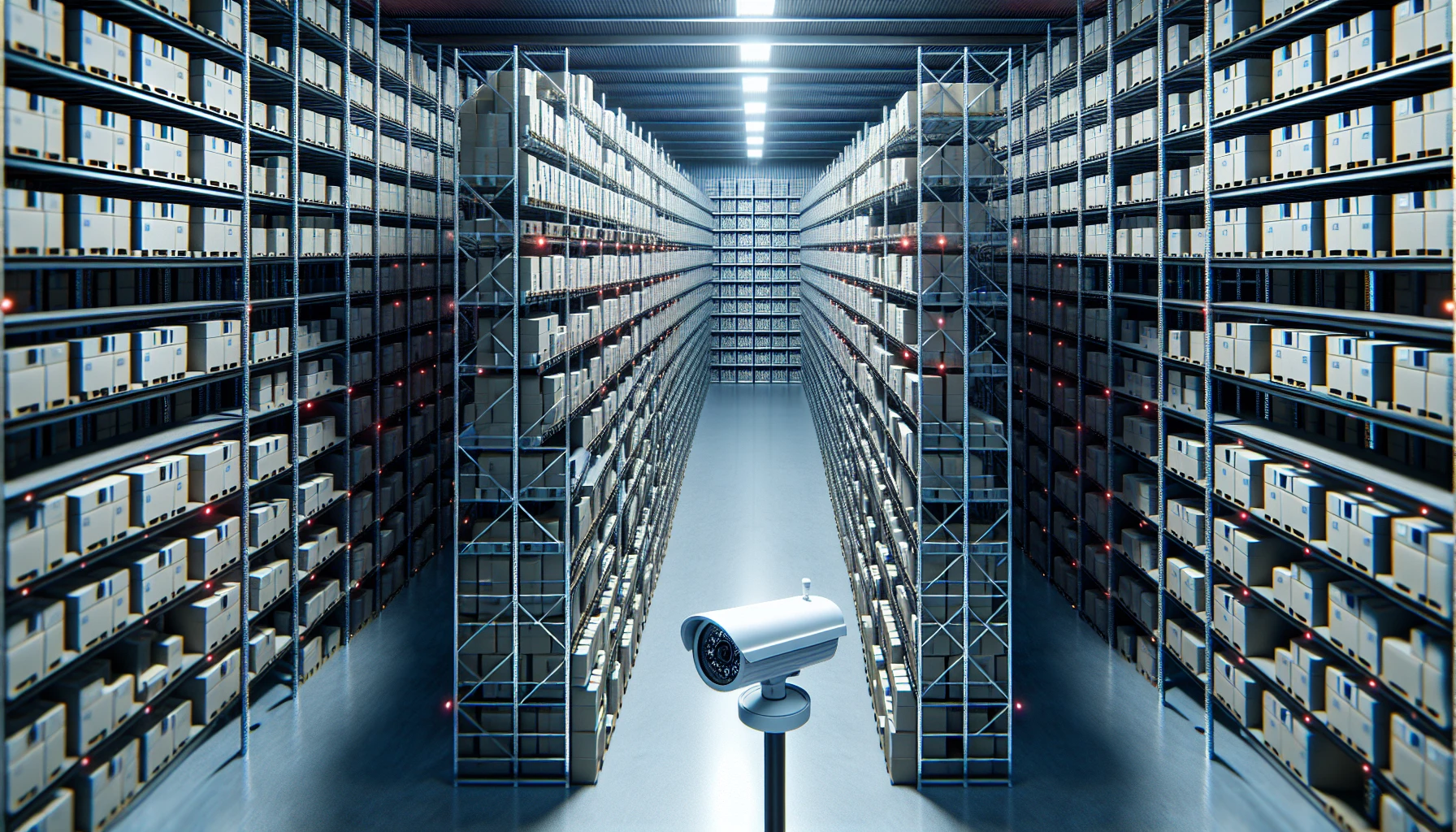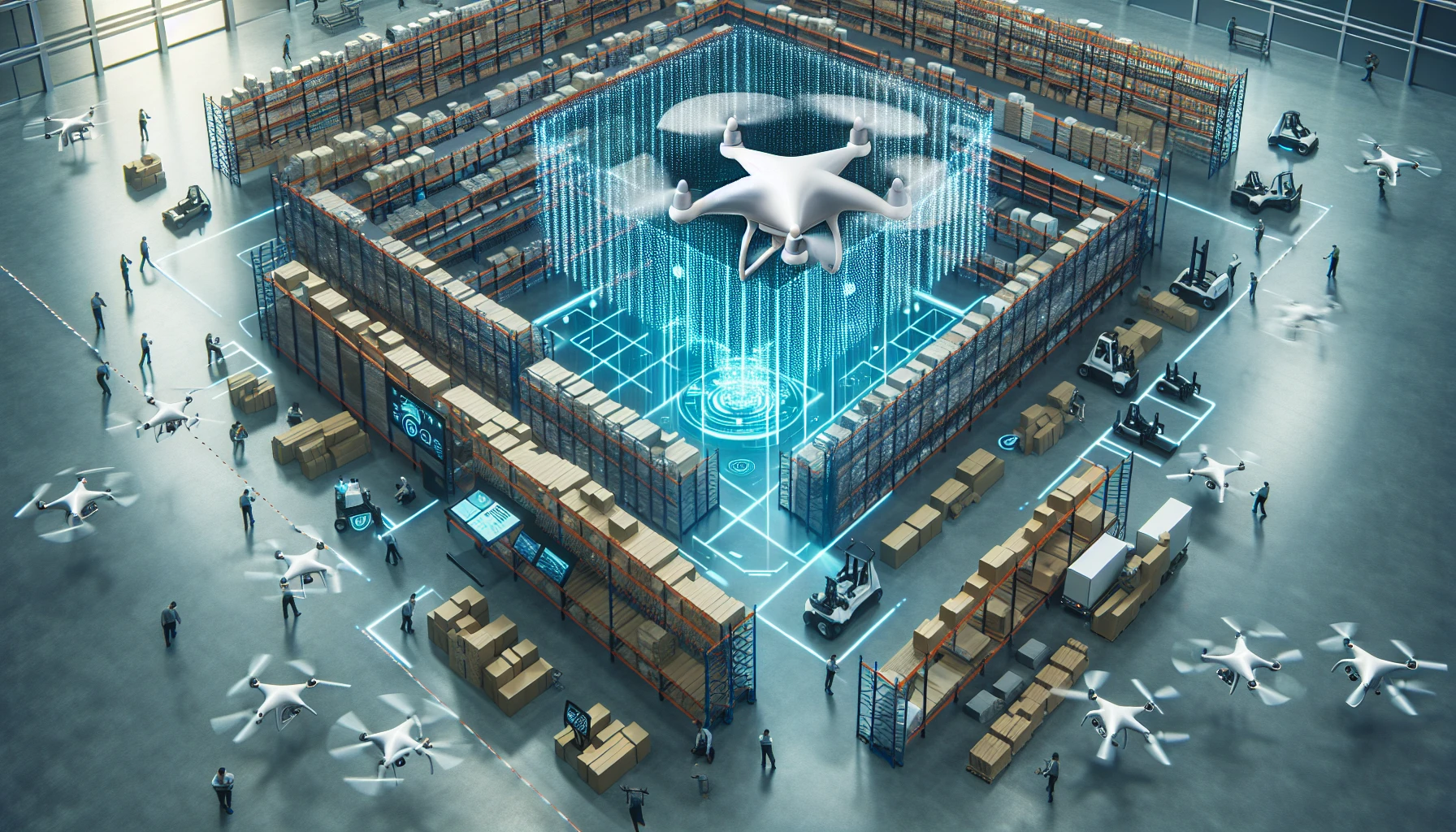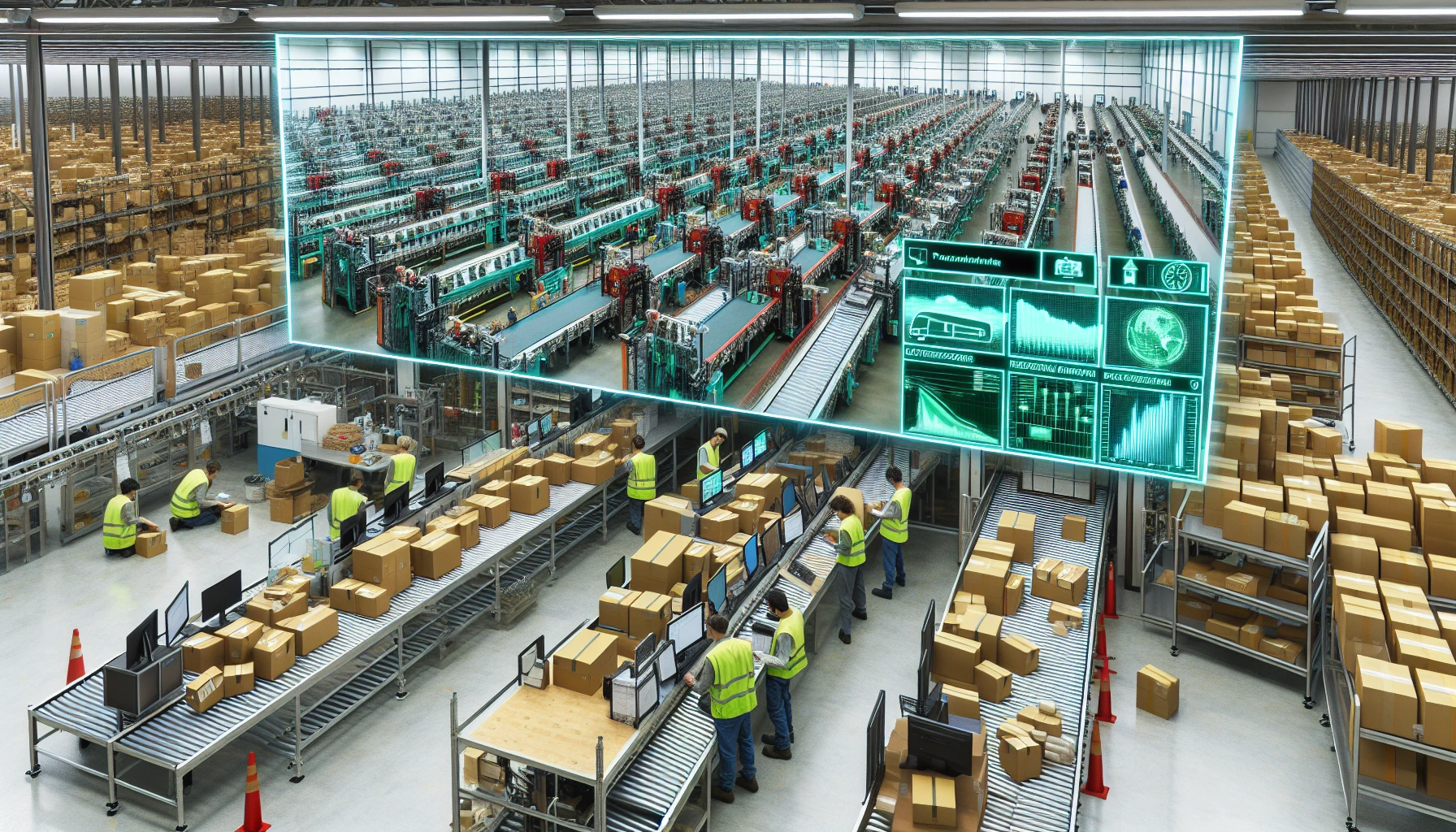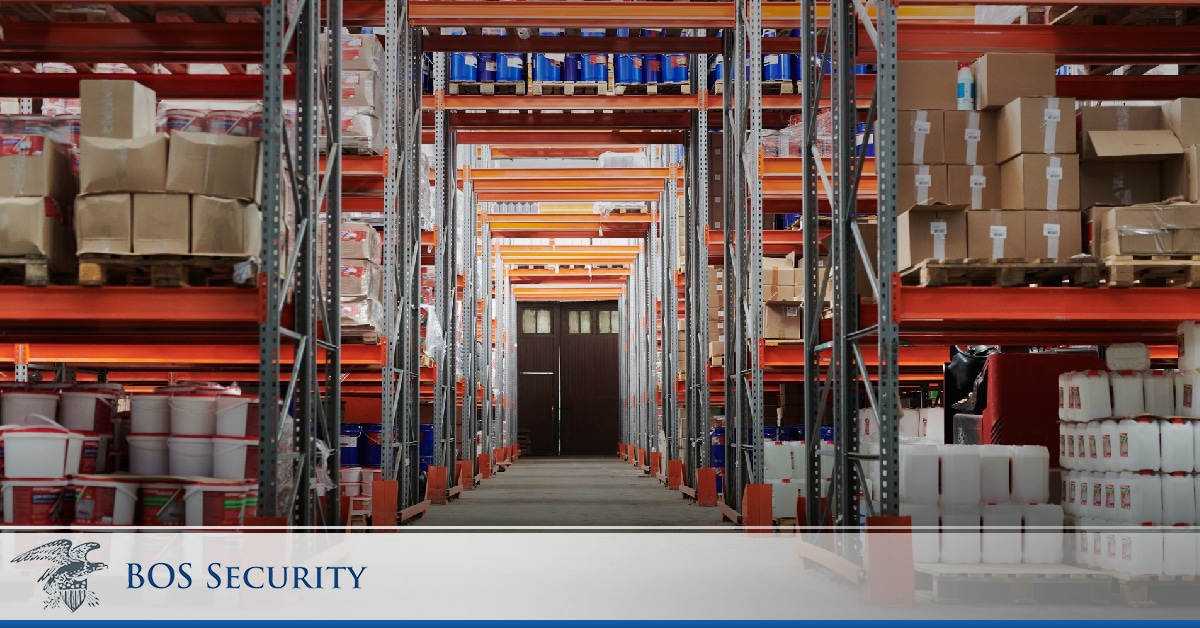Distribution centers are the backbone of a successful supply chain, enabling goods to flow efficiently from manufacturers to consumers. Ensuring their security is paramount in maintaining a smooth operation and protecting valuable assets. Distribution remote video monitoring offers a powerful solution by providing real-time surveillance, advanced detection, and seamless integration with access control systems, empowering distribution centers to stay ahead of potential threats and maintain a competitive edge in the market.
Key Takeaways
- Remote video monitoring is an effective security solution for distribution centers, providing comprehensive area monitoring and a range of benefits.
- Leading companies provide tailored solutions to improve security, asset tracking, inventory management & surveillance with advanced AI technology.
- Integration with access control systems enables real-time response to ensure secure & efficient operations while reducing false alarms & enhancing operational efficiency.
Elevating Distribution Center Security with Remote Video Monitoring

Remote video monitoring is transforming security management for distribution centers. With continuous coverage through high-quality cameras, speakers, and other security tools, managers and business owners attain peace of mind. Advanced equipment and technologies, such as digital security cameras, video analytics, and IP-based software, are at the forefront of this security revolution, ensuring maximum protection and efficiency.
Remote video monitoring offers a range of benefits for distribution centers, including:
- Lower insurance premiums
- The potential to substitute round-the-clock on-site security staff
- Enhanced detection and comprehensive area monitoring
- Live footage sharing with emergency dispatchers
- Bolstering public safety
- Auditing health and safety regulations
Tailored Solutions for Distribution Centers
Live video monitoring solutions are pivotal in upholding distribution center security. Remote video monitoring can be specifically adapted to a distribution center’s requirements, which may include asset tracking, inventory management, and warehouse security. Examples of tailored remote video monitoring solutions include video-based business intelligence solutions that assist distribution center managers with asset tracking and inventory management, and remote video monitoring systems that enable users to manage their security remotely via a mobile device or laptop.
Leading companies like Hikvision, Dahua, Bosch, Axis, Flir, Uniview, Hanwha Techwin, and Avigilon offer video-based business intelligence, asset tracking, inventory management, and video surveillance software for customizing remote video monitoring for distribution centers. This customization ensures that each distribution center receives a personalized security solution that fits its unique needs, providing maximum protection with the help of highly trained remote guards.
Advanced Detection with AI Technology
AI technology elevates remote video monitoring by offering:
- Real-time analysis
- Object recognition
- Behavior pattern analysis
- Remote monitoring capabilities
AI-powered video surveillance systems, IP cameras with AI analytics, and security cameras with AI capabilities are some examples of AI technologies used in remote video monitoring.
AI algorithms bolster threat detection in distribution centers by swiftly identifying anomalies and suspicious behavior, enabling immediate response and guaranteeing facility safety and security. The integration of AI technology with human expertise, as seen in systems like the SmartHub, results in a cutting-edge security solution that detects potential issues in a timely manner.
Integration with Access Control Systems
Remote video monitoring synchronizes with access control systems and security system, utilizing the hardware and software of both systems to simultaneously monitor and control video surveillance and access control. Some compatible access control systems include:
- Kisi
- Salto
- Brivo
- Paxton
- Kantech
Recent developments in access control systems, such as integrating access control and CCTV, cloud-based access control solutions, biometrics, and AI, provide enhanced security and protection in distribution centers.
The integration of access control systems and remote video monitoring improves the security of distribution centers by:
- Allowing real-time monitoring and tracking of authorized personnel
- Enhancing the ability to detect and prevent unauthorized access
- Guaranteeing that only those who are permitted can access restricted areas
Furthermore, remote video monitoring service allows for access to camera feeds from remote locations and at any time, providing continuous remote video surveillance and the ability for a rapid response to any security incidents.
On-Site vs. Remote Video Monitoring: A Cost-Benefit Analysis

Compared to on-site monitoring, remote video monitoring presents a cost-effective security approach, featuring intelligent alerts and the cost-saving benefits of remote guards. Remote video monitoring services can range from $250 to $3200 per month, depending on the number of cameras and the level of features and protections selected. In comparison, on-site security personnel at distribution centers can cost from $22 to more than $100 per hour, depending on the specific needs and requirements.
Compared to on-site video monitoring, remote video monitoring offers several advantages:
- It is a more cost-efficient and effective solution, lowering operational expenses.
- It provides a customized security approach.
- It can reduce false alarms.
- It offers real-time response through audio speakers or dispatching on-site security personnel.
- It ensures that distribution centers remain secure and efficient.
Reducing False Alarms with Intelligent Alerts
Intelligent alerts within remote video monitoring utilize sophisticated video analysis and AI technologies to detect and respond to particular events or incidents in real-time. These alerts are optimized to:
- Reduce false alarms
- Provide precise notifications to security personnel or designated staff
- Include automated warning messages
- Send notifications to live video monitoring teams
- Send direct alerts to business owners
By implementing technologies such as video verification, alarm filtering software, and artificial intelligence, intelligent alerts can effectively reduce false alarms in security systems. Decreasing false alarms results in numerous advantages, such as improved productivity and concentration, quicker and more efficient response, cost savings, and decreased pressure on emergency services.
The Financial Advantage of Remote Guards
Remote security guard services offer a cost-effective substitute for on-site security personnel in distribution centers. Remote video monitoring is typically 35-50% less expensive than on-site security guards. Studies have shown that remote guarding can be up to 60% less expensive than traditional manned guards, making it a more cost-efficient option for businesses with limited resources that cannot afford to hire multiple security guards.
By providing a financially advantageous alternative to on-site security personnel, remote video monitoring empowers distribution centers to allocate resources more efficiently, focusing on growth and market competitiveness. This cost-effective security solution not only safeguards valuable assets but also contributes to a more efficient and secure working environment.
Related Topic: IS YOUR SECURITY GUARD SLEEPING ON THE JOB?
Real-Time Response: The Heart of Remote Video Monitoring

Real-time response is vital in remote video monitoring, enabling quick detection and intervention for possible threats. Advanced technologies, such as thermal cameras and night vision, are used to enhance remote video monitoring capabilities in low-light conditions. Seamless communication with emergency services is also vital, ensuring a prompt response to any security incidents.
Remote video monitoring boosts security and safety in distribution centers through real-time surveillance, detection, and response. This proactive approach ensures that potential threats are identified and addressed before they escalate, reducing the likelihood of losses and damage to valuable assets.
Thermal Cameras and Night Vision
Thermal cameras and night vision technology significantly improve remote video monitoring capabilities in low-light conditions. Thermal cameras capture images based on the heat radiating from people and objects, allowing for a clear outline of objects to be seen even in complete darkness or low-light conditions. Night vision technology, on the other hand, operates by utilizing infrared light, enabling the capture of clear images in low-light or dark conditions.
The use of thermal cameras and night vision technology in remote video monitoring allows for continuous surveillance and threat detection, even in challenging lighting conditions. This ensures that distribution centers remain secure around the clock, preventing potential security breaches and safeguarding valuable assets.
Seamless Communication with Emergency Services
Remote video monitoring enables seamless communication with emergency services by facilitating immediate coordination and collaboration between emergency responders. Video conferencing permits responders to:
- Communicate and coordinate their efforts in real-time, even when they are in different locations
- Bolster situational awareness, resource allocation, and decision-making
- Result in quicker response times and more efficient emergency services
Technologies used to enable seamless communication between remote video monitoring systems and emergency services include:
- Surveillance cameras
- License plate recognition systems
- Body cameras
- High-speed fiber optic connections
- Wireless devices
- Video conferencing platforms
By ensuring a prompt response to security incidents, remote video monitoring enhances the overall safety and security of distribution centers.
Protecting Assets from Internal and External Threats

Remote video monitoring is key to shielding distribution center assets from both internal and external threats, including theft, vandalism, and unauthorized access. Live video monitoring solutions can significantly reduce security gaps and help identify and address employee theft in the warehouse. Furthermore, video evidence provided by remote video monitoring can be employed to improve operations and resolve disputes.
Through continuous surveillance and threat detection, remote video monitoring protects valuable assets and fosters an efficient, secure working environment. This comprehensive security solution not only deters criminal activity but also promotes a culture of accountability and responsibility among employees.
Inventory Protection Strategies
The implementation of inventory protection strategies within remote video monitoring can significantly bolster the security of valuable assets in distribution centers. Some effective strategies include:
- Utilizing data to determine optimal stock levels
- Enhancing inventory labeling and naming processes
- Implementing cycle counting
- Optimizing processes to decrease errors and increase efficiency
By providing real-time surveillance and monitoring of the facility, remote video monitoring enables the detection of suspicious activities or unauthorized access, preventing theft, vandalism, and other security breaches that can lead to inventory loss. Furthermore, remote video monitoring allows security personnel to quickly respond to any potential threats and take appropriate action to protect the inventory.
Addressing Employee Theft
Employee theft poses a serious issue for distribution centers, leading to substantial losses and damage to valuable assets. Remote video monitoring can help address employee theft by providing real-time surveillance and evidence for investigations. Recent technological developments in remote video monitoring for theft detection include features such as face recognition, alarm on theft detection, and AI-powered video monitoring.
Real-time surveillance in remote video monitoring assists in preventing employee theft by:
- Providing the ability to quickly detect and retrieve stolen assets
- Offering real-time analytics and notifications to address internal theft
- Functioning as a deterrent to employees
- Utilizing video footage as an instructional and accountability tool
- Allowing an immediate response to occurrences of theft through real-time monitoring capabilities.
Enhancing Operational Efficiency with Video Monitoring

Video monitoring greatly contributes to enhancing operational efficiency in distribution centers through real-time surveillance, advanced detection, and seamless integration with access control systems. By monitoring workflow, productivity, and ensuring compliance and safety, remote video monitoring enables distribution centers to streamline operations and maintain a competitive advantage in the market.
In addition to enhancing security, remote video monitoring can greatly impact the overall efficiency of distribution centers by:
- Providing valuable insights into operations
- Enabling real-time assessment of workflow and productivity
- Combining video surveillance with video content analysis to gain invaluable insights into operations
- Making informed decisions to optimize productivity
Monitoring Workflow and Productivity
Remote video monitoring facilitates real-time evaluation of workflow and productivity in distribution centers, enabling managers to identify bottlenecks, supervise productivity, and swiftly adjust to optimize workflow. Dome cameras and HD security cameras with Pan/Tilt/Zoom (PTZ) capabilities are ideal for monitoring workflow in a distribution center.
By providing real-time visibility into operations, remote video monitoring allows managers to recognize areas of improvement, streamline processes, and reduce downtime. This ultimately results in improved efficiency in distribution centers, enabling them to stay competitive in the market and better serve their customers.
Ensuring Compliance and Safety
Video monitoring is pivotal in guaranteeing compliance with safety regulations and fostering a secure working environment in distribution centers. By providing real-time surveillance, detection, and response, remote video monitoring enhances security and safety in distribution centers, preventing potential security breaches and safeguarding valuable assets.
Remote video monitoring assists distribution centers in ensuring compliance by providing a means to:
- Track packages
- Detect theft
- Monitor inventory movement
- Act as a deterrent
- Generate valuable data
- Enable businesses to meet compliance requirements
- Improve warehouse safety and efficiency
This comprehensive security solution not only deters criminal activity but also fosters a culture of compliance and responsibility among employees.
Harnessing the Power of Remote Video for Market Competitiveness
Through advanced security solutions and operational efficiency, remote video monitoring enables distribution centers to maintain market competitiveness. With real-time visibility into operations, managers can make informed decisions to optimize productivity and streamline processes, ensuring that distribution centers remain agile and responsive in a rapidly evolving market landscape.
Leveraging Remote Video for Comprehensive Site Management
Comprehensive site management leverages remote video monitoring for real-time surveillance, threat detection, and response in distribution centers. This all-encompassing security solution offers the following benefits:
- Safeguards valuable assets
- Contributes to a more efficient and secure working environment
- Enables distribution centers to focus on growth and market competitiveness.
Summary
In conclusion, remote video monitoring is an invaluable asset for distribution centers seeking to enhance security, improve operational efficiency, and maintain a competitive edge in an ever-changing market. By providing real-time surveillance, advanced detection, seamless integration with access control systems, and comprehensive site management, remote video monitoring empowers distribution centers to face the challenges of today and embrace the opportunities of tomorrow.
Frequently Asked Questions
What is remote video monitoring?
Remote video monitoring is a security service that allows individuals or businesses to monitor their premises, assets, or properties through the use of video cameras. Instead of having someone physically on-site to watch the cameras, the monitoring is done remotely, often in real-time, by trained professionals or through automated systems.
Can a company use video surveillance to monitor employees?
Video surveillance is commonly used by employers to monitor employees in the workplace, provided that employees are properly notified. However, video surveillance may be restricted when it comes to union activity and other state laws.
How much does remote security monitoring cost?
Remote security monitoring typically costs between $50 and $150 per camera per month.
What are the advantages of remote video monitoring over on-site security guards?
Remote video monitoring offers cost-efficiency, intelligent notifications, reduced false alarms and the financial benefits of remote guards, making it more cost-effective than on-site security guards.
What role does real-time response play in remote video monitoring?
Real-time response plays a critical role in remote video monitoring, allowing for immediate detection and intervention of any potential threats to ensure the safety and security of distribution centers.


